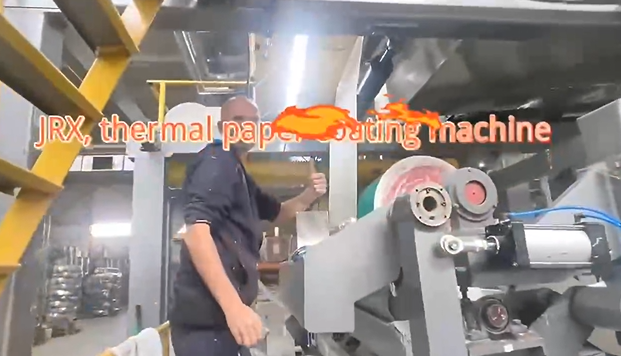Font Size:
In response to the increasing demand for information paper in our evolving information society, thermal paper and inkjet printing paper have emerged as key representatives. Thermal paper relies on heat energy to create images, with various types such as melt transfer, diffusion transfer, and direct color. The colorless direct color thermal paper, in particular, holds a significant market share.

With continuous improvements in thermal paper quality, hardware simplification, and cost reduction, coupled with ongoing advancements in thermal recording methods, the thermal paper industry has witnessed substantial growth. Colorless dye thermal paper, with characteristics similar to ordinary paper, easily develops color, driving the exploration of new raw materials and manufacturing methods to enhance clarity and prolong storage time.
The production of thermal paper involves not only the development of raw materials but also the quality and manufacturing methods of the base paper. Unlike China, where a few comprehensive enterprises dominate the market share, the production landscape varies.
Japan, a pioneer in thermal paper development, held a leading global market share for a considerable period, reaching 70%. While Japan's dominance has slightly diminished due to the expiration of material patents, the introduction of Japanese technology has facilitated the gradual improvement in manufacturing levels for overseas companies.
The overview of thermal recording paper development includes the evolution of colorless dye-type thermal recording paper by NCR Company, particularly driven by the growth of fax machines. In Japan, where document communication relies heavily on kanji and kana, the desire for transmitting written documents intact through fax images fueled the competition to enhance clarity and shelf life.
Beyond fax machines, thermal paper found applications in various fields, with small printers like cash registers being the most common users. The fundamental structure of thermal paper involves a base paper with a color-developing layer composed of fine particles of a colorless dye and a color developer.
The introduction of sensitizers in the color development system has transformed it into a three-component structure: dye-developer-sensitizer. Sensitizers accelerate color development, leading to the rapid crystallization of the colorless dye-chromogen complex. However, excessive crystallinity may result in whitening, emphasizing the need for appropriate crystallinity.
To prevent fading when exposed to oils and plasticizers, a protective coating can be added, although this may reduce sensitivity and introduce other challenges. Mitsubishi Paper has explored a new color development system utilizing irreversible chemical reactions, enhancing image durability.
Competition among papermaking companies to establish technological leadership and dominate market competition is intense. Respecting intellectual property rights, especially patented technologies, has been a key practice in Japan, preventing imitation by other companies.
Ongoing research on X-ray structural analysis of leuco dyes and chromogenic agents is contributing to a deeper understanding of the high-storage chromogenic complex's structural characteristics. Bisphenol A, a traditional color developer, faces environmental concerns, leading to its discontinuation in Japan, suggesting the need for alternative color developers in China.
In conclusion, the thermal paper industry continues to evolve, driven by advancements in technology, material development, and a commitment to intellectual property rights. The ongoing pursuit of innovation ensures the industry's resilience and adaptability to changing demands.
Paper Type You Must Know in the Paper Industry
Application of carboxymethylcellulose as papermaking additive in paper production
Carbonless paper coating chemicals components
2024-01-22The Impact of Stiffness and Density on the Quality of Coated Paper
2024-01-22Quality index of coated base paper
2024-01-22Explore the development of the thermal paper market since 2023: Trends, challenges and opportunities
2024-01-22Unveiling the Divergence: Boiler vs Steam Generator in Paper Drying
2024-01-22What is the thermal paper coating machine line?
2024-01-22Why does the thermal paper coating machine request calender?
2024-01-22Carbonless paper coating chemicals components
2024-01-22The Impact of Stiffness and Density on the Quality of Coated Paper
2024-01-22Quality index of coated base paper
2024-01-22